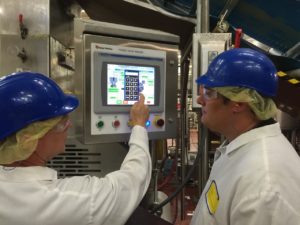Business case
- B&N Europe was asked by a major manufacturer of cereal bars to improve production uptime in their largest cereal bar plant.
- Plant experiencing problems with chocolate temper and product finish causing significant downtime.
- Most experienced internal problem solvers and tempering equipment suppliers brainstormed– but the problem had not been solved.
Initial Condition
- Could not achieve the correct temper index when checked with a temper meter. As the run continued the temper index was dropping even though all the control point temperatures were in specification and stable.
- Line had to be stopped and all the chocolate in the system had to be reheated, which lasted a minimum 2 hours during which no production was possible.
- The problem was occurring on every run and had been doing so for 4 months.
- Adjustments had been made to the temper settings to levels outside the design specifications
Target Condition
- Eliminate 2-3 hours of down time per day
- Return product quality to previous levels
Planned Activities / Intervention
- The team used PCS- problem solving model and found a single root cause which was de-seeding, an area that had been previously overlooked.
- The team found that the de-seeder chocolate temperate was too low as tubes had become blocked with product crumb and raisins.
- This led to inconsistent flow rates flow rates and a lower chocolate de-seeding temperature.
- A temperature monitoring system on the out feed of the de-seeder is in place to give an early warning of any issues
- The de-seeding unit was unblocked over a weekend and on restart the problem did not re-occur and has not happened since.
Achieved Metrics
- By eliminating unplanned downtime this line has saved saving $107,000 per year.
- The problem-solving model is now available as a detailed guide in case further problems arise in future (knowledge transfer).
- De-seeding unit is now stabilized and controls are in place to prevent further blockage.

